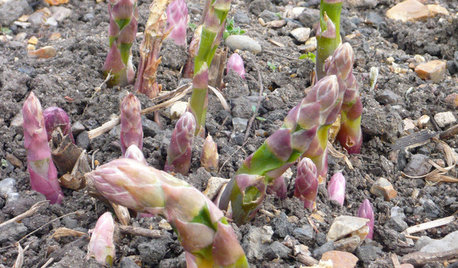Soil mix for asparagus in raised bed
tunnymowg
15 years ago
Featured Answer
Sort by:Oldest
Comments (13)
laura_42
15 years agomutajen
15 years agoRelated Professionals
Simi Valley Landscape Architects & Landscape Designers · Cedar Hill Landscape Contractors · Essex Landscape Contractors · Fairview Landscape Contractors · Flagstaff Landscape Contractors · Golden Landscape Contractors · Hoffman Estates Landscape Contractors · Indianapolis Landscape Contractors · Las Vegas Landscape Contractors · Lees Summit Landscape Contractors · Crowley Landscape Contractors · Muscoy Solar Energy Systems · Gardena Solar Energy Systems · Richmond Solar Energy Systems · Titusville Solar Energy Systemsdavid52 Zone 6
15 years agoSkybird - z5, Denver, Colorado
15 years agotunnymowg
15 years agoelkwc
15 years agoSkybird - z5, Denver, Colorado
15 years agotunnymowg
15 years agoDan _Staley (5b Sunset 2B AHS 7)
15 years agotunnymowg
15 years agoDan _Staley (5b Sunset 2B AHS 7)
15 years agojolj
13 years ago
Related Stories

COOL-SEASON CROPSCool-Season Vegetables: How to Grow Asparagus
Patience pays off with this harbinger of spring that lasts for decades in the garden
Full Story
GARDENING AND LANDSCAPINGBuild a Raised Bed to Elevate Your Garden
A bounty of homegrown vegetables is easier than you think with a DIY raised garden bed to house just the right mix of soils
Full Story
GARDENING GUIDES10 Solutions for Soggy Soil
If a too-wet garden is raining on your parade, try these water-loving plants and other ideas for handling all of that H2O
Full Story
GARDENING GUIDESGardening Solutions for Heavy Clay Soils
What’s a gardener to do with soil that’s easily compacted and has poor drainage? Find out here
Full Story
FARM YOUR YARDHow to Get Good Soil for Your Edible Garden
The nutrients in your soil feed the plants that feed you. Here are tips on getting it right — just in time for planting season
Full Story
GARDENING GUIDESHow to Stop Worrying and Start Loving Clay Soil
Clay has many more benefits than you might imagine
Full Story
GARDENING GUIDESThe Poop Scoop: Enrich Your Soil With Good Old Manure
Get over the ick factor already — this natural super-ingredient for soil has so many benefits, you'll wonder why you ever went chemical
Full Story
GARDENING GUIDESGardening Solutions for Dry, Sandy Soils
Has your desert or beachy site withered your gardening creativity? Try these ideas for a beautiful, easy-care landscape
Full Story
FARM YOUR YARDHow to Build a Raised Bed for Your Veggies and Plants
Whether you’re farming your parking strip or beautifying your backyard, a planting box you make yourself can come in mighty handy
Full Story
GARDENING GUIDESVegetables and Flowers Mix in Beautiful Edible Gardens
Ornamentals, meet your edible garden mates. We know you'll get along just beautifully
Full Story






Skybird - z5, Denver, Colorado